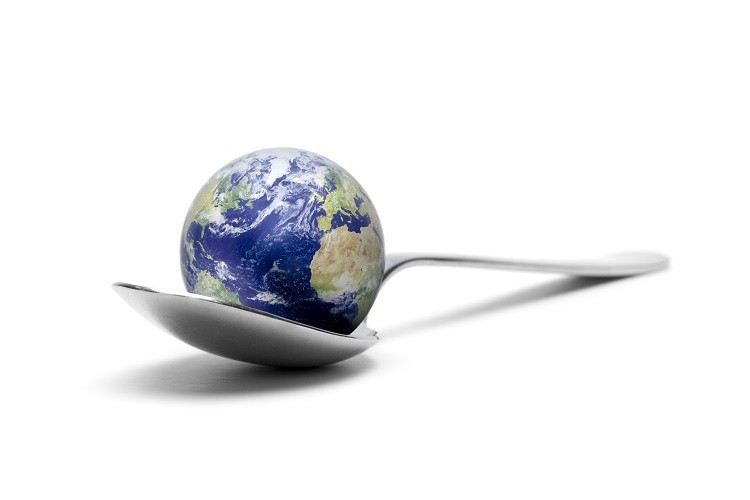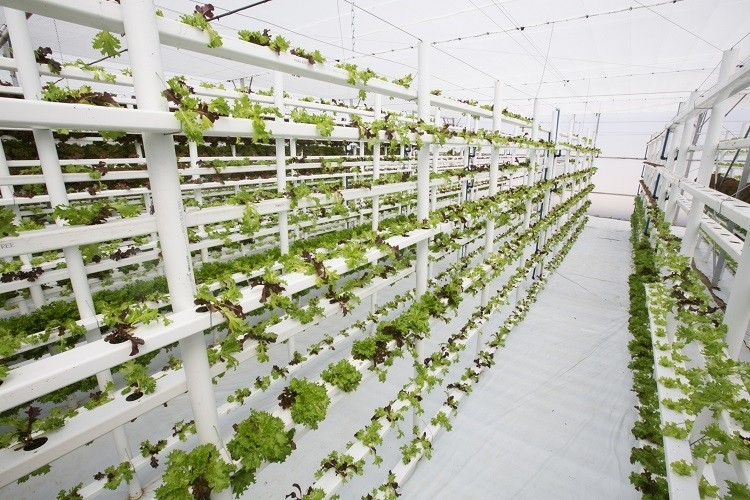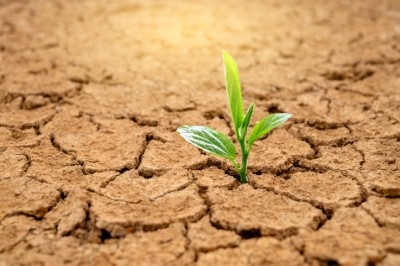Bringing food to the ‘centre of the table’ at COP27: ‘In Glasgow we made commitments, in Cairo we implement them’

Food production is linked to more than one-third of total manmade greenhouse gas emissions. The agri-food sector must play a key role in limiting global warming to 1.5˚C – as per the Paris Agreement.
The ‘first steps’ to amplify food systems transformation in high-level, UN discussions have been taken, according to Wiebe Smit, Program and Policy Specialist at Clim-Eat. “However, with agriculture and food systems contributing over one-third of greenhouse gas emissions, we really must act now.
“The window to keep global heating reduced, and hopefully limit to 1.5˚C, is closing fast. We need to step up the role of food systems within these high level discussions.”
Clim-Eat, together with vertical farming operator Infarm and a selection of public and private partners, is working to ensure food and agriculture is front-of-mind at COP27.
Through this lens, we ask how the UN’s 27th Climate Change Conference will differ to its 26th, how will the narrative have changed by next year’s COP28?
From a ‘commitment COP’ to an ‘implementation COP’
At last year’s COP26 in Glasgow, food barely managed to make its way onto the political agenda.
Exceptions include the Policy Action Agenda for Transition to Sustainable Food and Agriculture and the Global Action Agenda for Innovation in Agriculture. But for the most part, the United Nations’ 26th Climate Change Conference focused on the development of green energy.
“What people don’t always seem to clock is that while there has been a lot of focus on renewable energy – which is the zeitgeist [of COP discussions] – the whole food system contributes 33% of global emissions,” according to Sudhanshu (Suds) Sarronwala, Chief Impact Officer at Infarm.
According to the Intergovernmental Science-Policy Platform on Biodiversity and Ecosystem Services (IPBES), agriculture is the primary driver of ecosystem degradation.
“That’s why we’re working with public and private partners at the Food Systems Pavilion: to raise the collective voice and make sure food is at the centre of the table.”
Indeed, this year, advocates of food sector transformation are hosting the first even food-focused pavilion at COP27. Participant organisations include Clim-Eat, EIT Food, Good Food Institute, Yara International, and Infarm.
“We want to be focused on solutions at COP27,” stressed Sarronwala at FoodNavigator’s Climate Smart event. “The solutions exist. How can we commercialise, how can we scale, and how can we bring that element of food security and climate resilience to food supply?”

Herein lies a stark difference between COP26 in Glasgow and the upcoming COP27 in Egypt: an increased focus on solutions.
Last year’s COP26 could be perceived as a ‘commitment COP’, explained Clim-Eat’s Smit. “And this year’s COP27 in Egypt is being as an the ‘implementation COP’.
“At the Food Systems Pavilion, we want to we want to move away from thinking about food systems transformation and move into implementation and action… on the ground.”
Helping LMICs achieve their targets
Action should not be taken on home soil alone, however. Some of most widely-publicised CO2 commitments to date have come out of countries with strong economies, but what about low- and middle-income countries (LMICs)?
In fact, according to the Global Alliance for the Future of Food, some of the most ambitious – and perhaps less publicised – climate plans are coming out of Colombia, Senegal, and Kenya. These countries have pledged to promote agroecological and regenerative locally led agricultural practices, which are less emissions-intensive than industrial farming methods.
Such countries’ commitments present both an opportunity and a barrier, suggested Smit. “These countries do show ambition… but how to implement these ambitions?”
The ‘big’ opportunity here for stronger economies is in helping to facilitate the implementation of these nationally determined contributions (NDCs). “Stronger economies can play a big role in how we take this opportunity…and make sure we help LMICs to implement [their ambitions] on the ground.”
Will technology help us get there?
What role can technology play in helping both developed and developing nations improve nutrition security, sustainably?
One of the key challenges in rolling out novel technology lies in cost. However, economies of scale will play a significant role in overcoming such hurdles, suggested Infarm’s Sarronwala.
“The fundamental truth is that technology is developing fast. And when it develops fast, it becomes more accessible.”
Data solutions, for example, are already playing an important role – whether it be leveraged to help smallholder farmers in developing countries of ‘big farming systems’ in developed countries. “People have access to satellite data for biodiversity razing [or] to detect crops diseases and seek solutions.”
Another example lies in renewable energy solutions, which weren’t always available to developing nations.
“The critics always talked about renewable energy being a developed country proposition. But today, nobody talks about that anymore. Once it was developed, and the access grew, today you talk about renewable energy in Africa as much as you talk about it in Europe.
“You talk about it in Asia as much as you talk about it in North America.”
For Sarronwala, this is the same trajectory he expects to see in new agri-tech innovations. As Chief Impact Officer at vertical farming operation Infarm, he foresees controlled environment solutions will be both adopted and adapted.
“Vertical farming may look different in different parts of the world. But it’s a system of climate resilient farming, of controlled environment agriculture, that can provide food security. And that is the need of the hour.
“While we go through climate shock, what will we farm? That’s where technology is going to play a role.”
What’s in store for COP28?
With COP27 less than six weeks away, it may feel early to be making COP28 projections in Dubai. But if COP26 was about commitments, and COP27 will be about implementation, we were keen to know what COP28 will have in store.
“It should really be a key milestone, where we take stock of the implantations we have agreed upon during this year’s COP,” Smit told FoodNavigator. “That’s what I’d like to see… a move from thinking, to doing, to checking.”
Of course, implementation towards food systems transformation may not be smooth sailing. In which case, checking for progress is just as important. If that’s the case, then it’s critical we ask: ‘Where are the gaps?’ suggested Clim-Eat’s Smit.
“For me, that would be the key hope: for COP28 to showcase what has really happened on the ground.”

For Infarm’s Sarronwala, by COP26 he wants to see agri-tech ‘mainstreamed’ – particularly by its host region, the Middle East. “I want governments to be recognising the value of people and planet in the same coin, [with focus on] social, economic, and environmental benefits.”
The Chief Impact Officer also wants to see greater adoption and adaption of vertical farming technologies by this time next year. “Controlled environment agriculture has really got to be centre piece by the time we get to COP28…we can see the climate impacts around the world right now and it is devastating, [so looking at how technology] can address that.”













